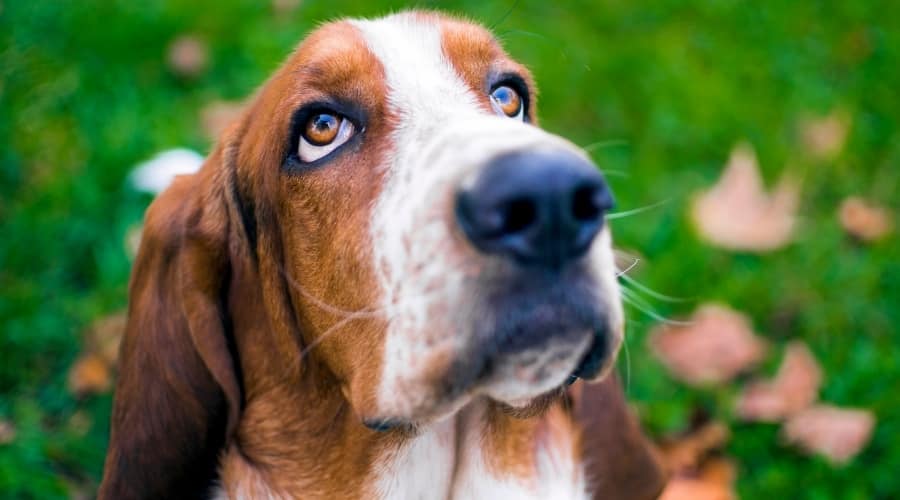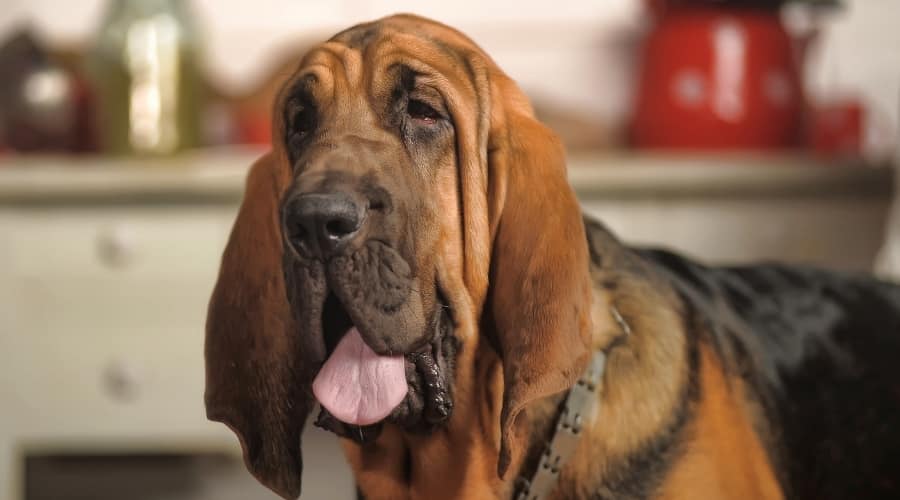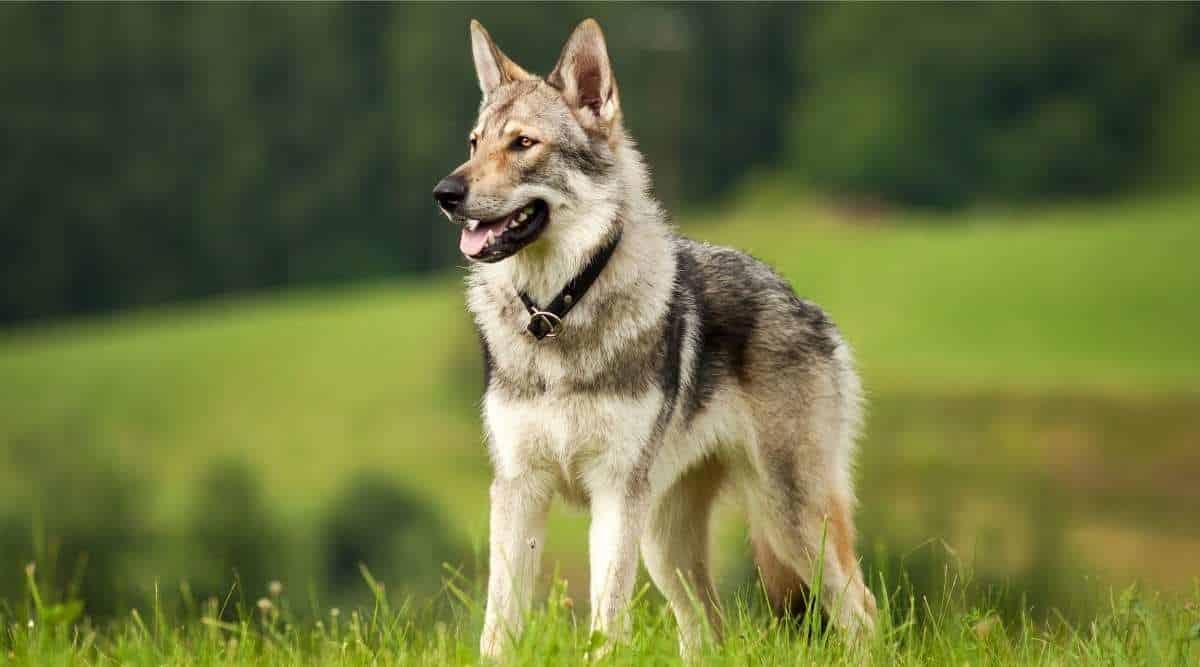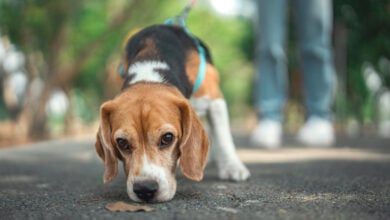20 Low-Energy Dog Breeds That Love Naps More Than Walks
When you purchase through links on our site, we may earn a commission. Here’s how it works.
If the idea of daily dog jogs makes you want to lie down, you’re my kind of human. Let’s face it, not everyone wants a hyper hound doing parkour off their furniture at 6 a.m. Some of us prefer the low-energy dog breeds, the nap-before-fetch types. The kind of lazy dog breeds that will snuggle up on the couch, give you side-eye when you grab the leash, and proudly treat walk time like a mild suggestion.
Table of Contents
The good news? These calm dog breeds are real, lovable, and surprisingly healthy when matched with the right home. In fact, many vets and trainers recommend these low-maintenance dog breeds for seniors, apartment dwellers, or anyone who’d rather binge-watch than backyard sprint. So if you’re looking for a pup that’s big on love but low on cardio, keep reading. I’ve rounded up the 20 best dogs that don’t need much exercise, and they’re ready to chill with you, no judgment.
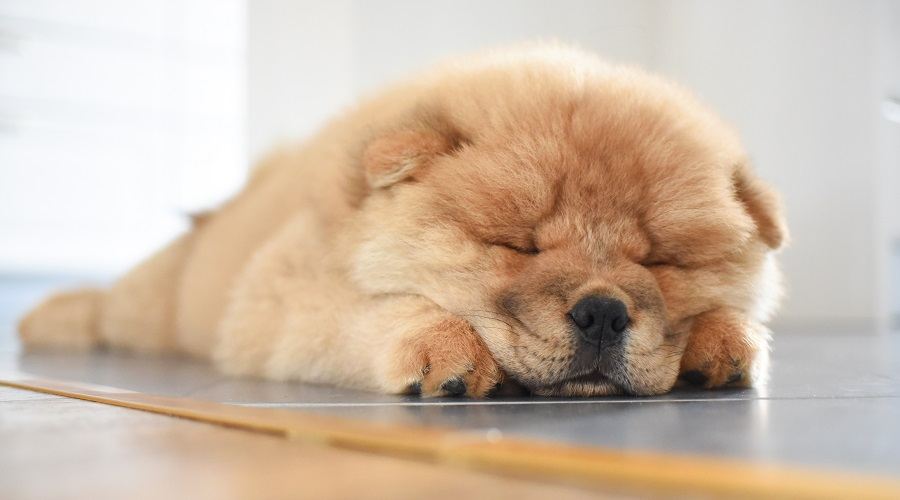
Are Any Dog Breeds Truly “Lazy?” (The Myth Of Low-Energy Dogs)
Let me clear something up immediately: no dog is technically lazy, just selectively motivated. What we often label as a “lazy dog” is really a breed with lower exercise needs, a calmer demeanor, or a personality that says, “You want me to run? In this economy?”
Some breeds were originally developed to guard, snuggle, or simply exist in royal comfort (looking at you, Pekingese). That doesn’t mean they won’t play; they’re just not staging a triathlon in your living room.
What Makes A Dog “Low Energy?”
Veterinarians and trainers generally define low-energy dog breeds as those that:
- Are content with short daily walks or light indoor play
- Don’t demand constant attention or stimulation
- Tend to nap more than they zoom
These breeds are perfect for:
- Apartment dwellers
- Seniors or people with mobility concerns
- Busy folks who love dogs but hate cardio
So while “lazy” might sound like an insult, in the dog world, it’s often just a vibe. And a lovely one at that.
Low-Energy, Not No-Effort: What To Know Before Adopting A “Lazy” Dog
If you think you would like a ‘lazier’ dog because you are not sure you will have the time or inclination to deal with high energy requirements, it is important that you first take the time to honestly evaluate whether getting a dog is actually the right decision for you, your family and your lifestyle.
Is the dog going to be left at home alone for long periods frequently? Is this fair to them? If you want a dog for company but are not prepared to take them out on walks, maybe a cat or other smaller pet would be a better choice.
Every Dog Is Different
You may have heard that a particular breed is a low-energy dog, but every dog is an individual. There is no guarantee that the dog you welcome home will want to lounge around on the sofa all day long. While many breeds have lower energy requirements, all canines require attention, love, and mental and physical stimulation.
Even if their walks are shorter, all dogs need time devoted to mental enrichment. Looking for a specific characteristic, like lazy dogs that don’t shed or lazy dog breeds good for seniors, isn’t always guaranteed. So, keep an open mind about it and do thorough research before bringing home any new dog.
Too many dogs end up in shelters because people underestimate the demands of dog ownership. The ASPCA estimates that around 3.1 million dogs enter shelters in the US every year. Don’t let your dog become another unfortunate statistic.
Why Senior Dogs Make The Best Low-Energy Companions
If you want a dog who’s 99% down to nap through a Netflix binge and won’t tear your slippers apart for fun, consider adopting a senior. By going down the adoption route, you can select an adult or senior dog. If they are in a foster home, the fosterers will assess how they are in the house, their energy levels, and specific needs. They will be able to provide a better idea of the type of home environment they would suit best. Most senior dogs don’t need extensive training, although some might need housebreaking.
If you opt to bring home a puppy, all puppies have energy. All puppies need time and commitment for general training, socialization, and potty training. If you don’t give them the training and stimulation they need, they are more likely to develop problem behaviors like separation anxiety or destructive behavior due to boredom. There’s no such thing as low-energy puppy breeds.
And even if you have selected a breed that is generally known for being lower in energy, you may have unwittingly chosen the one pup from the litter that is a real live wire. They could turn out to be a dog that goes against the mold and needs lots of walking and much more stimulation around the home than you were expecting.
Healthier For You & Them
Senior dogs match beautifully with low-maintenance lifestyles, especially for:
- Older adults
- People with limited mobility
- First-time dog owners
Senior dogs can often be a good choice for individuals looking for a low-energy dog. They usually do not have the same exercise requirements as younger dogs and are often happy just to have a comfy bed or sofa to curl up on, some short walks, and potty breaks.
Older dogs are often the most overlooked in shelters, yet they bring a ton of love with way less chaos. They’ve already outgrown the destructive puppy phase, don’t need hours of daily activity, and many are already house-trained. So, by considering adopting a senior dog with less energy, you could be helping them to enjoy their retirement in much-deserved comfort.
Many animal welfare organizations even offer reduced adoption fees or provide medical support for seniors, making it easier to give these gentle souls a second chance.
Gratitude In Every Tail Wag
There’s something special about senior dogs, a quiet wisdom in their eyes, and a sense that they know they’ve been given a second shot. They don’t ask for much. Just love, food, a soft place to sleep, and maybe a few snacks.
Top 20 Best Low-Energy Dog Breeds That Need Minimal Exercise
Let’s be honest, not everyone dreams of hiking with a Husky or chasing after a Border Collie in the park. If your ideal dog is more “nap enthusiast” than “fitness influencer,” these breeds are for you.
I’ve rounded up 20 of the best low-energy dog breeds that love lounging more than lunging. While every dog is unique, these breeds generally require less exercise, are more content indoors, and make great companions for low-key lifestyles.
This list is not in any particular order, and it is not definitive. There are lots of mixed-breed dogs out there that will also be less energetic than others. Remember, while these breeds are known for having less energy, every dog is an individual.
Greyhound
Some people may be surprised to learn that the Greyhound is generally a very low-energy breed, given that they can run so fast and they are pretty big too. While Greyhounds can be incredibly fast-moving, these bursts of speed tend to be short.
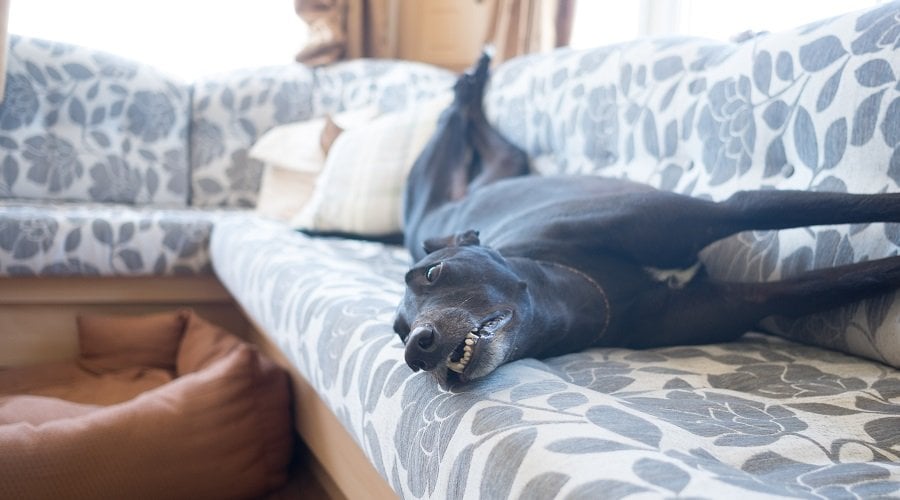
They are often regarded as total couch potatoes who are happy with just a short daily walk. They love nothing better than snuggling with their owners on the sofa for much of the day. Because of this, despite their size, they are also often recommended as dogs suited to apartment living.
While they tend to have lower energy requirements, they do like company and should not be left for prolonged periods. They are also known for having a high prey drive, so they cannot always live with cats, and care should be taken when out on walks, too.
Because they are often discarded at the end of their short racing careers, this means there are a lot of Greyhounds in rescue. So, if you want the reward of adopting an often peaceful and gentle breed that does not require too much exercise, then this could be an excellent choice.
Basset Hounds
The Basset Hound is often known for being a bit lazy. They tend to be gentle and laid-back and do not have high exercise requirements. Given their scent-hound traits, a gentle daily walk with plenty of sniffing opportunities will generally be sufficient.
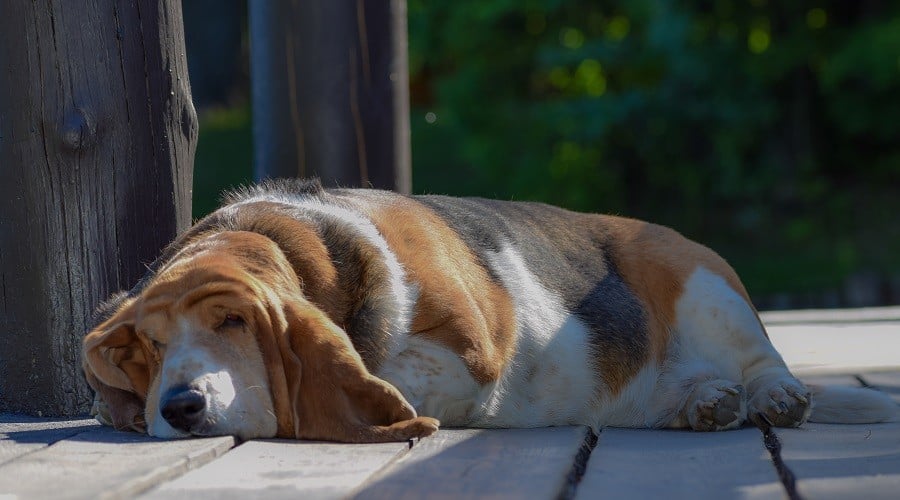
They can be known for being stubborn, though, so they may need extra reward-based training efforts in certain situations.
Their long, droopy ears can make them more prone to ear problems, and their long bodies and short legs can cause back and joint problems, like IVDD. Care must be taken to ensure that they do not become overweight, as this can put even more strain on their joints.
Great Danes
The Great Dane may be one of the largest dog breeds around, but that doesn’t mean they have the most significant exercise requirements.
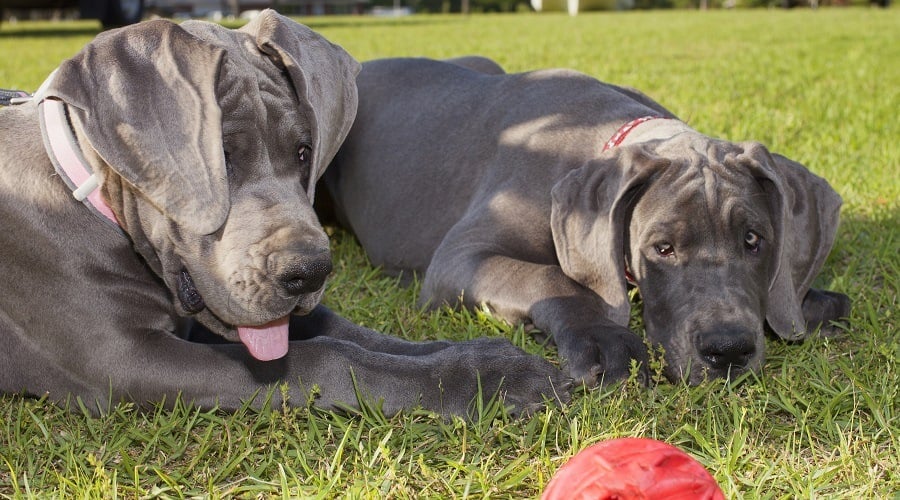
Although they may not need as much exercise as many other breeds of their size, they can still be known for being playful and goofy. They will need to be kept appropriately enriched at home. Great Danes are often regarded as good family pets because they tend to be good with children and other pets.
They are not a breed that is associated with longevity, though, so you will need to be prepared to say goodbye sooner than with some dogs. Plus, your feeding budget will be considerably higher than if you opt for a toy breed dog.
Bulldog
Often referred to as the English Bulldog, this breed is easily recognizable and known for its low exercise requirements. Part of this relates to the breed’s conformation. They are stocky, squat dogs with flat faces, so care needs to be taken to ensure that they are not overexerted, especially in hot weather.
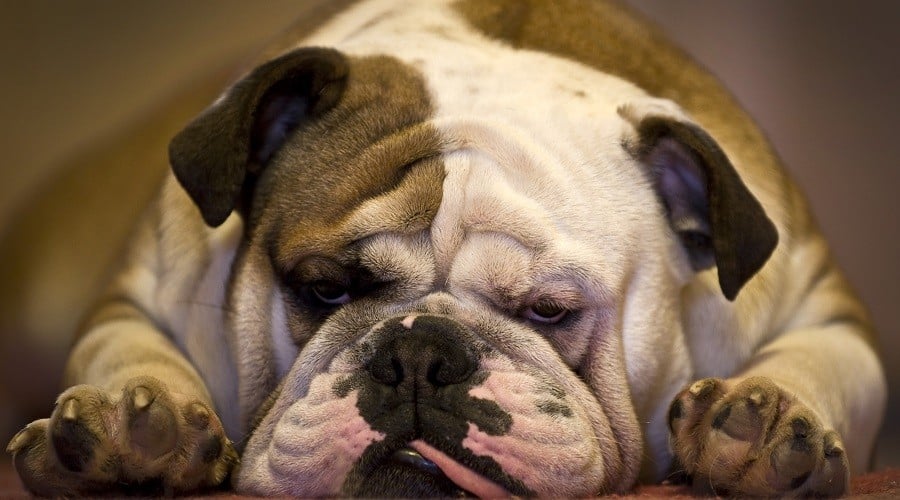
Bulldogs tend to be laid-back dogs with a friendly and characterful nature, although they are also known for having a stubborn streak.
They are a breed that is prone to several health problems, including respiratory issues, eye problems, and musculoskeletal conditions. So, picking a reputable breeder and considering pet insurance are important considerations.
Pugs
Pugs have grown enormously in popularity in recent years. They have unique, often loving, sometimes mischievous personalities and are certainly unique to look at too. Pugs and Pug mixes are popular in entertainment and pop culture and often appear in advertising and on social media.
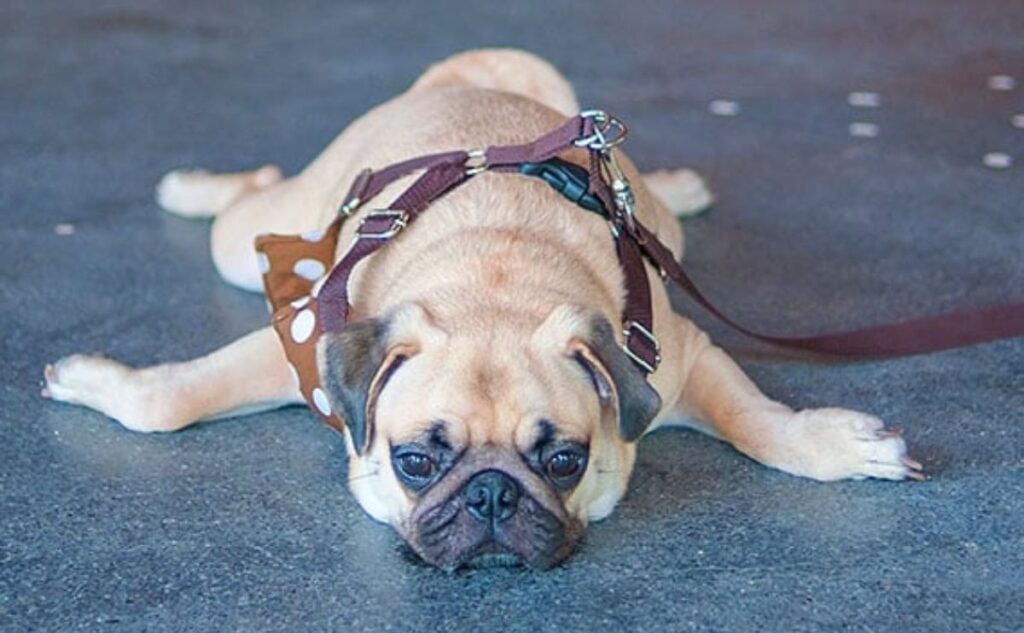
While they can be very playful, Pugs are not known for having high exercise requirements. Again, this is partly due to them being another brachycephalic, flat-faced breed. As with the Bulldog, care needs to be taken when exercising to ensure they do not overheat.
As with most brachy breeds, they can be prone to respiratory and eye conditions, and are also associated with developing skin allergies. They are also a breed that can easily become overweight, so it is crucial to control their diet carefully.
Cavalier King Charles Spaniel
The Cavalier King Charles Spaniel breed is known for being extremely adaptable. If they have less active owners, they are generally quite content with one decent daily walk and lots of cuddles. But they also happily accompany owners on longer hikes and adventures. They are usually less hyper than their Cocker Spaniel relatives.
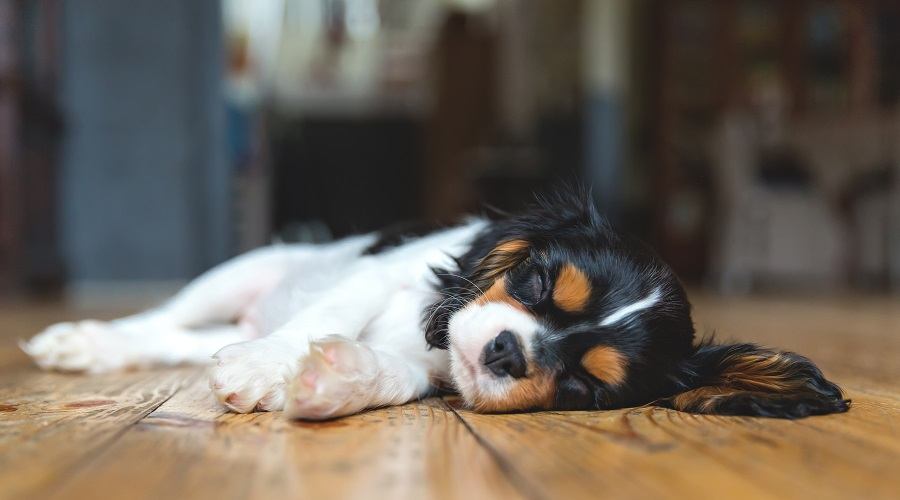
Cavas are usually very gentle and affectionate and are often selected as good family dogs. They like to be showered with love and attention, are eager to please, and are usually very receptive to training.
They are another breed associated with certain genetic health problems. Some of them are serious, so you should always ensure you seek out a responsible breeder if you are not going down the adoption route.
Chow Chow
The Chow Chow is a unique and rare breed known for being very loyal and generally calm. They do not have high exercise requirements, but they are not generally suited to novice dog owners.

Chows are very clever but can be obstinate and prone to guarding. They are not always keen on other dogs or strangers, so they may need extra support in training and socialization.
If you are looking for a dog that loves affection and attention, this may not be the breed for you either. While often steadfastly loyal to their people, they can be aloof and like their independence. They also require frequent grooming to keep their coats in good condition and tangle-free.
Pekingese
The Pekingese is a small breed known for being affectionate, loyal, intelligent, and pretty low-energy. They are another breed with a stubborn streak, though, so lots of reward-based training may be required to keep them on their best behavior.
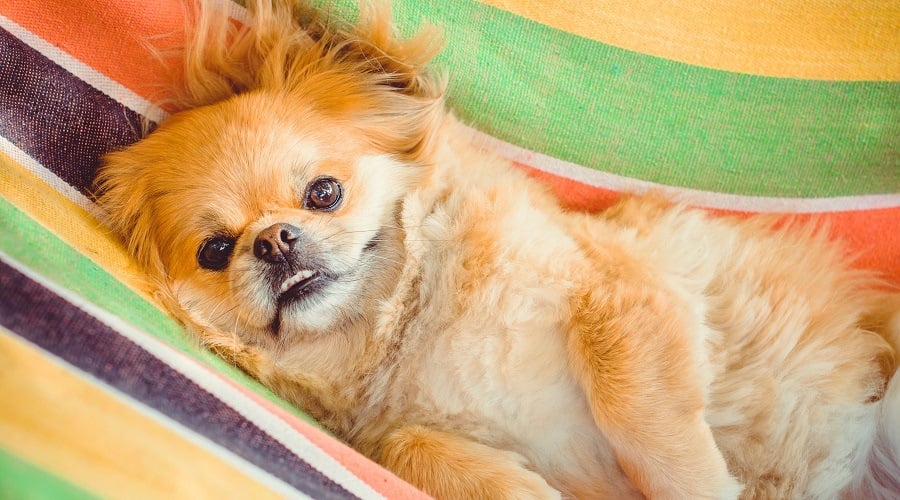
They are also a breed that needs regular grooming to ensure their long coat does not become tangled.
Another Brachy breed, care needs to be taken so that they are not overexercised, especially in hot weather. This also means that they may develop health problems associated with their face shape.
Whippet
Happy-go-lucky, very friendly, quiet, and generally easygoing, the Whippet is known for being a great family pet. They also tend to get along well with other dogs.

While they often enjoy zoomies when they are out on a walk, once back home, they are usually happy to snuggle up and enjoy a cuddle and a snooze. They are another breed that could fit in well with a low-energy or high-energy household as long as their general needs are met.
Whippets will enjoy a longer walk than some of the breeds on this list, but if they get enough exercise, they will usually be very settled at home. They do thrive on company, though, so they are not a dog that suits being left for too long on their own. They can have a high prey drive for small animals they find outside.
French Bulldog
The Frenchie has soared in popularity in recent years. Their adorable appearance and personalities make them a hit with many people. Yes, they are usually charming, playful, very affectionate, and often make great family pets, but they are also a breed prone to several health conditions.
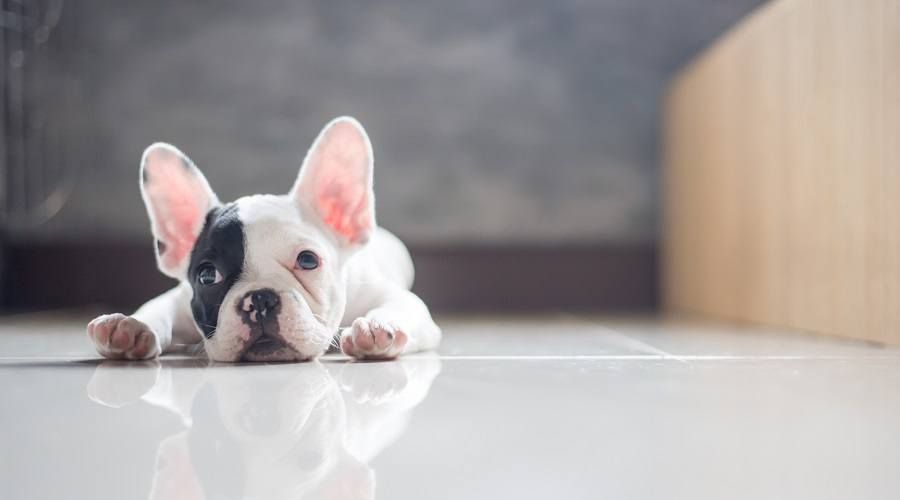
Care should be taken to ensure that you seek out a responsible breeder who does health checks on the parents. As with other brachycephalic breeds, they can be prone to skin conditions and problems with breathing and eyes.
Again, this breed must be carefully monitored in hot weather because they can quickly overheat.
Shih Tzu
The Shih Tzu is often a popular choice for families and elderly households. They are often extremely sociable, enjoying the company of children and other dogs, and they tend to be adaptable but stubborn.
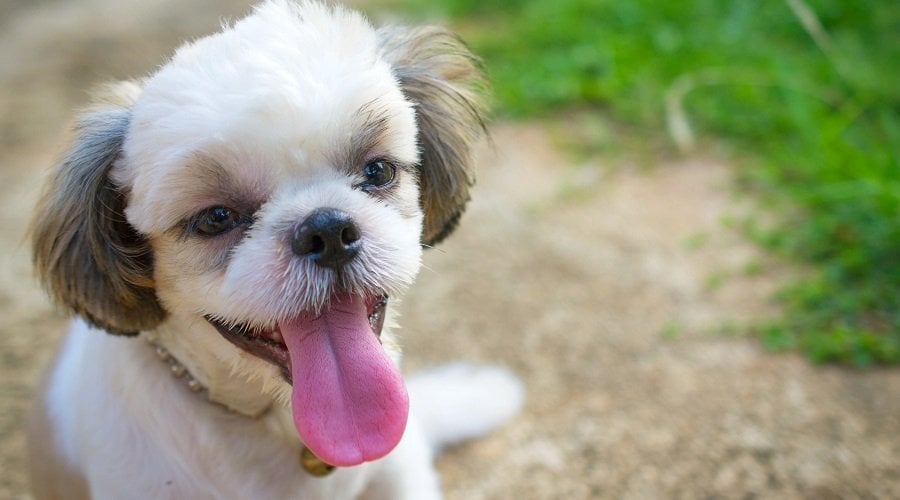
Shih Tzus do not generally have high energy requirements, and again, being a brachy breed, this means care needs to be taken when exercising in hot weather. They do enjoy a decent walk and can be very playful, so they are still plenty of fun.
Their coats require a lot of maintenance to prevent them from becoming matted and uncomfortable, although some owners choose to have them clipped down to avoid this issue. Along with the problems associated with the flat-faced breed, Shih Tzus are also more prone to developing dry eyes and suffering from back problems.
Mastiff
Similar to the Bullmastiff, the English Mastiff may be enormous, but this large breed is not known for demanding exercise requirements and is often seen as slightly lazy.
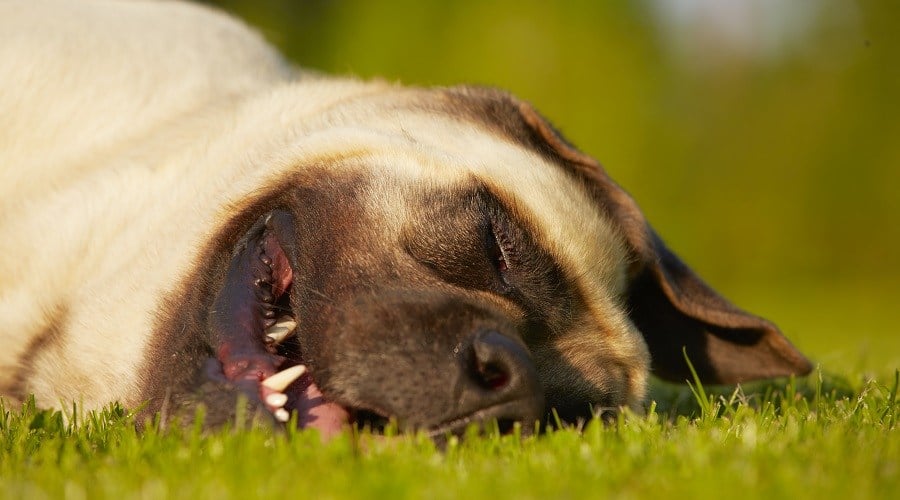
English Mastiffs are exceptionally loyal and loving towards their family despite their intimidating size. Because of their protective nature, if they do not receive the right socialization or training, there is a risk that they could start to exhibit territorial or guarding behavior. This should not be allowed to escalate, especially given their size and strength.
They are a breed that can be quite drooly, so you don’t want to be too houseproud. Care must be taken not to indulge their laziness too much, as they can be prone to becoming overweight.
They are another breed that is not associated with longevity because of their size, and they are also known for their desire to chew. Plenty of strong and interactive toys should be provided. American Mastiffs fall into the same energy category here as well, but many people think they are just a mutt version of an English Mastiff.
Japanese Chin
The ancient Japanese Chin is a noble, intelligent, laid-back, and loving little dog breed. They are often known for being a bit of a lap dog, and they tend to prefer snuggles to lots of huge daily walks. However, they can keep up perfectly well if you do want to take them out for a bigger adventure.
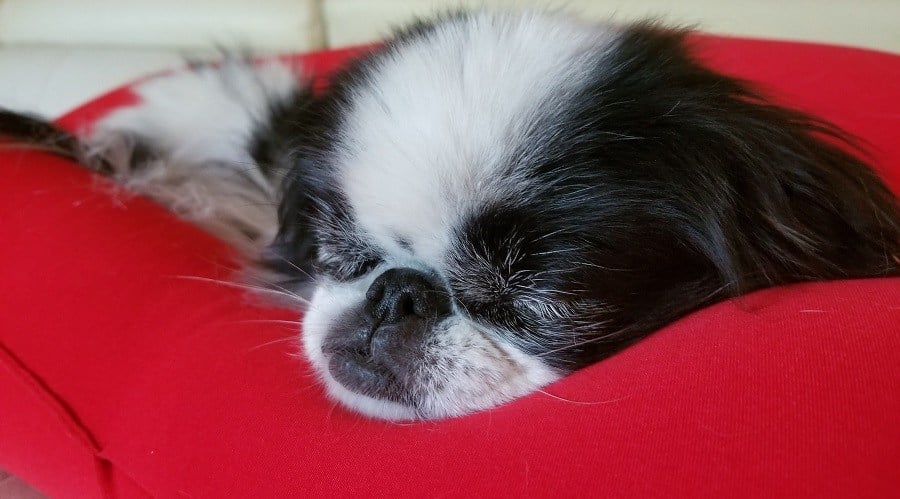
Care must be taken in hot weather, as they are another brachycephalic breed. Thankfully, they are one of the healthier brachy breeds, although they can be prone to eye and joint problems. They do not have excessive grooming requirements, despite their long coat.
Lhasa Apso
The Lhasa Apso is another small breed dog that, like the Shih Tzu, is known for being loving, playful, and pretty adaptable.
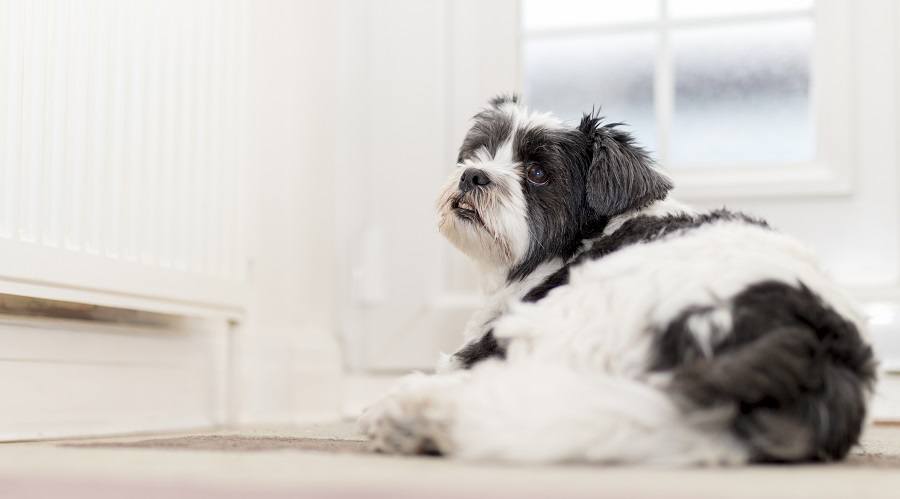
They do not have excessive exercise requirements, but that won’t stop them from enjoying longer walks too. They are not always as tolerant of children though, so they may not be best suited to a home with young children, and they can be a vocal breed.
While they are intelligent, they can also be strong-willed, so time and patience could be required in terms of training. They are also a breed that requires more attention to grooming. They will either need regular clipping or frequent brushing to ensure they do not become tangled.
Irish Wolfhound
The Irish Wolfhound is another large sighthound known for being calm, laid-back, affectionate, good with children, and not requiring excessive exercise.
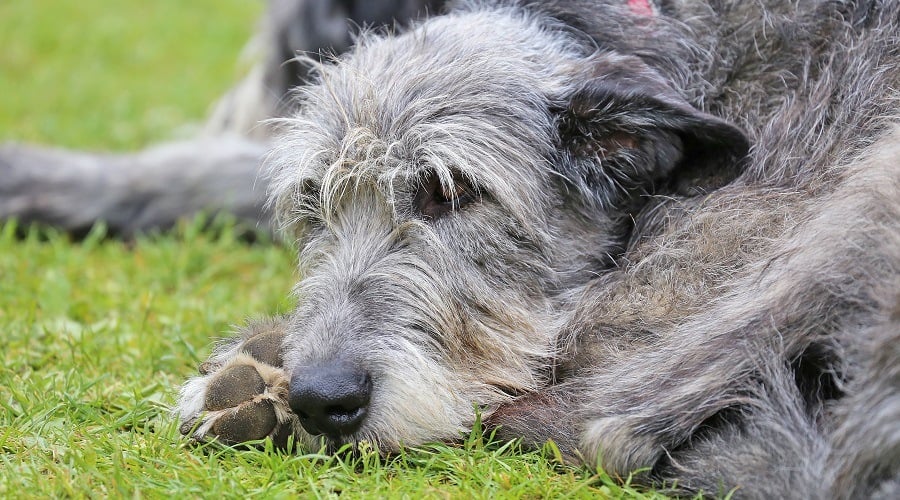
They do have a high prey drive, though, and care needs to be taken around small pets. Irish Wolfhounds are also a breed that thrives in the company, and they can suffer from separation anxiety if left too much on their own.
They can also be prone to large-breed health conditions like bloat (the twisting of the stomach) and joint problems, and you need to factor in the additional cost of feeding such a large breed, too.
Saint Bernard
Another breed known for being a gentle giant, the Saint Bernard tends to be affectionate, loyal, and easygoing. Although care needs to be taken because of their size, they are a breed that is usually extremely good with children.
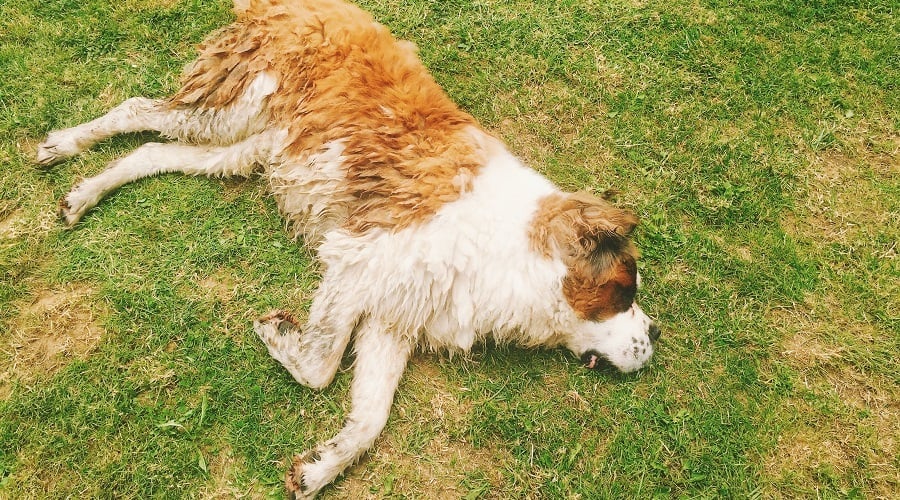
They do still have moderate exercise needs, and they need decent walks. But they are not as demanding in terms of their physical needs as some large breed dogs.
Care needs to be taken in the hot weather, as they can overheat more quickly, and they are a dog that slobbers a lot; a drool bib would be a good investment! They also shed a lot, and a good de-shedding tool would be recommended to keep their coat in good condition and the hairs somewhat at bay.
Shiba Inu
The Shiba Inu breed is the most popular pet dog in Japan. This is likely due to their confident, independent, and amiable personality. They are popular mixed breed pups and are often mixed with other purebreds to create designer dogs, like the Corgi Inu.

Shibas are one of the most active breeds on our list, but providing they get a decent daily walk and enough enrichment in the home, they tend to be pretty quiet at home. They are often selected as a dog appropriate for apartment living and are quite cat-like.
If they don’t get enough stimulation, they can become destructive and bored, and can suffer from separation anxiety if left alone too much. Their independent nature means that they also need extra patience when it comes to training, but given their intelligence, patience will pay off.
Shar Pei
The Shar Pei is often regarded as a lower-energy breed. While they are a dog that will not need daily hikes to keep them happy, they are not usually a breed that is recommended for novice dog owners.

They can be aloof, willful, and sometimes dog-aggressive. Their popularity in the eighties and the subsequent overbreeding means that they are also prone to many health conditions.
Bolognese
Although not completely sedentary, this is another breed that does not have high exercise requirements. They are a very playful and smart little breed, so they should have enough mental enrichment around the home, too.
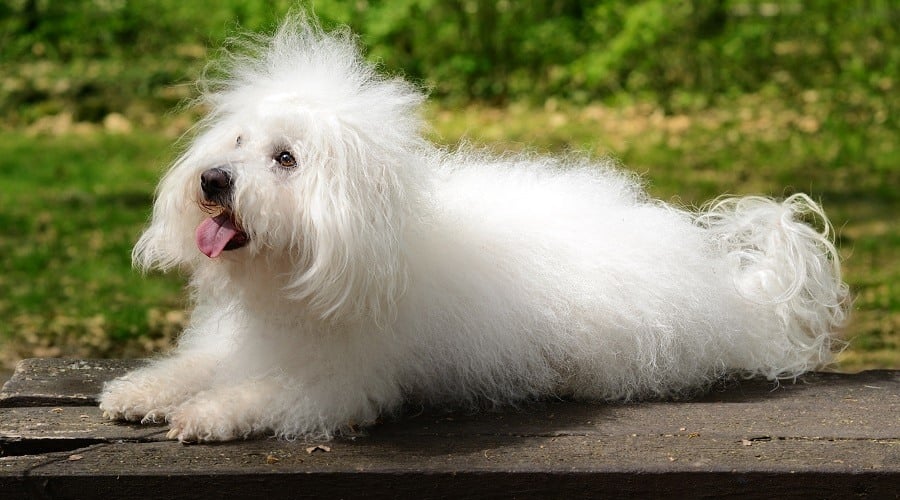
Bolognese are known for being extremely affectionate, calm, and friendly, and tend to get along well with other dogs. They do need a lot of grooming, and their bond with their humans means they can be prone to separation anxiety, too.
Bernese Mountain Dog
The Bernese Mountain Dog shares a lot of the same characteristics as the Saint Bernard. This is another gentle giant that tends to be a good family dog. While they do not need a lot of exercise to keep them happy, they will happily join you for a longer hike if the notion takes you.

They are not known for drooling as much as the Saint Bernard, although you can still expect a little slobber. Be aware that they also need a lot of grooming to keep the shedding hair at bay.
The breed is prone to developing cancer, and care should be taken to find a reputable breeder. Bernedoodles are a mixed breed, Bernese mixed with a Poodle. They have slightly higher energy levels because the Poodle is a high-energy pooch.
How To Choose The Right Low-Energy Dog For Your Lifestyle
So you’re sold on the idea of a low-maintenance, low-energy dog breed, which is an excellent choice! But before you adopt the first sleepy pup you see, it’s worth asking: Which calm canine is actually right for you?
Every lazy dog isn’t a one-size-fits-all nap partner. Some love affection, some love independence. Some drool like a faucet, others need grooming like a royal. Here’s how to match your lifestyle to the right lounge-loving breed and avoid buyer’s remorse (or worse, shelter returns).
1. Consider Your Living Space
- Apartment Dwellers: Go for compact dogs like the Shih Tzu, French Bulldog, or Bolognese. These breeds are quiet, adaptable, and don’t need much room.
- Homeowners with Yards: Most dogs would appreciate a yard, but larger breeds like the Greyhound, Mastiff, or Bernese Mountain Dog definitely appreciate space to stretch their legs.
2. Think About Energy vs. Engagement
Some low-energy dogs still need high mental stimulation. For example, the Shiba Inu may nap a lot but gets bored easily without brain games.
Ask yourself:
- Do You Enjoy Playing? Are you okay with daily puzzle toys or training games?
- What’s Your Love Language? Do you want a lapdog or a more independent couch buddy?
3. Be Honest About Grooming Commitment
- Hate Vacuuming? Avoid heavy shedders like Saint Bernards or Bernese Mountain Dogs.
- Don’t Mind Brushing Daily? Breeds like the Lhasa Apso or Pekingese will reward you with silky affection.
Low-energy doesn’t mean low-grooming. Sometimes it’s the opposite.
4. Factor In Health & Vet Costs
Many lazy breeds (like Bulldogs and Pugs) are prone to brachycephalic issues and need special care. Others may be prone to joint problems or obesity.
5. Match Temperament To Your Household
- Great with Kids? Try Cavalier King Charles Spaniels or Saint Bernards, both gentle and affectionate.
- More Chill, Adult Homes? Opt for Whippets, Shar Peis, or a senior dog who appreciates peace and quiet.
6. Don’t Overlook Rescue Dogs
Shelters and breed-specific rescues are full of low-energy dogs waiting for the right person. You might find the perfect calm companion, already house-trained and grateful to relax by your side. If it’s the right choice for you, adopt, don’t shop!
Choose With Compassion & Clarity
Bringing a dog home is a big decision, even if they’re nap-inclined. Take the time to reflect on your energy level, space, budget, and expectations. A little honest planning now saves a lot of heartbreak later, and gives your future furry friend the happy, peaceful life they deserve.
Tips: Caring For Calm & Lazy Dog Breeds
Sure, low-energy dogs are easier in many ways: fewer walks, less chaos, and more cuddles. But that doesn’t mean they’re set-it-and-forget-it pets. Even the laziest lapdogs need proper care to stay healthy, happy, and emotionally balanced. I’ve rounded up some vet-approved tips for caring for these lovable loafers, because even couch potatoes deserve gold-star treatment.
1. Don’t Skip Daily Movement (Even If It’s A Short Stroll)
Even calm dog breeds need regular exercise to prevent obesity and joint stiffness. That can mean a short walk, a light indoor game, or simply climbing the stairs. Aim for at least 15 to 30 minutes of light activity daily for most low-energy breeds.
2. Keep Their Weight In Check
Low-activity breeds are more prone to weight gain, which leads to serious issues like diabetes, arthritis, and heart disease. Portion control is key. Choose a weight management recipe formulated for your dog’s age and breed, and stick to a feeding schedule. That means no guilt-treating!
3. Make Mental Stimulation Part Of Their Routine
Even “lazy” dogs get bored, which can lead to behavioral problems like chewing or barking. Use puzzle feeders, scent-based games, or teach easy tricks like “touch” or “stay” to keep their minds engaged without tiring them out physically. Studies show that mental enrichment reduces stress and improves well-being in shelter and companion dogs alike.
4. Don’t Neglect Grooming (Or The Vet)
Some low-energy breeds (looking at you, Shih Tzu and Lhasa Apso) need frequent brushing and regular trims. And Bulldogs and brachycephalic breeds may require special care for skin folds and breathing issues.
It’s also important to schedule regular vet checkups, at least once a year, to catch underlying issues early. Many low-energy dogs are stoic and won’t complain until a small issue becomes serious.
5. Senior Dogs Need Extra TLC
If you have or plan to adopt a senior lazy dog, understand that they may need:
- Orthopedic bedding
- Joint supplements (with your vet’s go-ahead)
- Softer foods or dental care
- A little more patience
Compassion and consistency are the key to keeping older dogs comfortable and content.
Low energy doesn’t mean low effort. But with the proper care, these mellow pups become loyal, loving companions who’ll happily snooze beside you for years to come. And isn’t that the dream?
Mental Enrichment For Low-Energy Dogs: Keeping Calm Pups Engaged
Just because your dog prefers the couch to the trail doesn’t mean their brain’s on vacation. Even the chillest, low-energy dog breeds need daily mental stimulation to stay balanced, avoid boredom, and be the best version of their lazy little selves.
Here are some easy, low-effort enrichment ideas to keep your dog happy and stimulated without turning your home into a jungle gym.
1. Puzzle Toys & Snuffle Mats
Use puzzle feeders to make your dog “work” for their food. Snuffle mats and treat-dispensing toys are excellent for engaging their powerful noses. These work especially well for calm but food-motivated breeds like Pugs and Cavalier King Charles Spaniels.
2. Nose Work Games
Hide a treat in another room and ask your dog to “Find it!” Or place multiple containers down and let them sniff out the one with the prize. Think DIY barn hunt, but at home, and without the rats! This activates instinctive behavior in a safe, low-impact way. And most lazy dog breeds are food motivated, too.
3. Teach A New Trick
Low-energy dogs still enjoy learning. Simple commands like “touch,” “look at me,” or “give paw” offer fun, low-intensity bonding moments. Training sessions can be as short as 5 minutes a day. Perfect for both the lazy dog and their busy human.
4. Rotate Toys Weekly
Dogs get bored with the same toys. Keep a stash and rotate them weekly to keep things fresh and engaging. Choose toys with different textures, sounds, or scents to engage multiple senses.
5. Try Calming Music Or Dog TV
Yes, it’s a thing, and it works. Soft music or dog-specific YouTube channels can help reduce anxiety and offer passive enrichment during downtime. These are great for seniors or dogs that stay home alone during the day.
Enrichment Is Love In Action
Mental stimulation isn’t just about preventing chewed shoes. It’s about giving your dog purpose and joy, even in the most peaceful home. Lazy dogs still have rich inner lives, and enrichment helps them stay sharp, relaxed, and connected to you. A little effort goes a long way toward keeping your low-energy pup living their best (and laziest) life.
Health Risks & Care Tips For Low-Energy Dog Breeds
Low energy doesn’t mean problem-free. In fact, some of the calmest, cuddliest dogs are also the ones that need a bit of extra health attention, especially if their laid-back lifestyle starts tipping into full-on laziness. Whether you’ve got a mellow Mastiff or a snoozy Shih Tzu, here are the most common health concerns to watch for, and how to keep your easygoing pup feeling their best.
1. Obesity: The Biggest Risk For Lazy Dog Breeds
Let’s be real: calm dogs love snacks and naps, meaning the scale can creep up quickly. Obesity increases the risk of:
- Joint problems like arthritis
- Diabetes
- Heart disease
- Shortened lifespan
Stick to portion-controlled meals, limit treats, and avoid overfeeding out of guilt or cuteness. Use a slow-feeder bowl or puzzle feeder to make mealtime mentally stimulating, too.
2. Brachycephalic Breathing Issues
Many popular low-energy dog breeds, like Pugs, French Bulldogs, and Japanese Chins, have squished faces, medically known as brachycephalic syndrome. These brachycephalic breeds are prone to:
- Labored breathing
- Overheating (especially in summer)
- Snoring and sleep apnea
- Trouble with intense exercise
Keep them cool, avoid strenuous walks, and never walk them in extreme heat. Ask your vet about surgery options if breathing becomes too restricted.
3. Joint & Mobility Problems
Large, calm breeds like Great Danes, Mastiffs, and Irish Wolfhounds are more prone to:
- Hip and elbow dysplasia
- Arthritis
- Spinal issues
Consider orthopedic bedding, joint supplements, and low-impact exercise like short walks on soft surfaces. Keep their weight in check because those extra pounds add up quickly on large frames.
Ready To Welcome Your Low-Energy Pup Home? Don’t Miss These Essentials!
Bringing home a calm, low-energy dog is just the beginning of a laid-back life together, but the right gear and prep can make it even smoother. Before settling in for snuggles, ensure you have the best leash for your dog’s walking style, especially if you’re dealing with breeds that don’t love long treks. For added comfort and control, check out our guide to the best dog harnesses, including options for flat-faced or broad-chested breeds. If you’re new to dog ownership or simply want to stay organized, our checklist for welcoming a dog into your home covers everything from food bowls to creating a cozy nap zone. And don’t forget to prepare for the unexpected. Our vet-approved pet first aid kit essentials will help you stay calm in any emergency. Your journey with a low-energy pup should be peaceful, but a little preparation goes a long way!
Got a couch potato of your own? We’d love to hear about your lazy pup! Share your favorite low-energy dog breeds or hilarious nap-time stories in the comments below. We’re all about celebrating the snuggle pros!
Why Trust Canine Journal
Gemma is a freelance writer, certified dog fanatic, and proud advocate for the slower side of canine life. She has over a decade of experience, including running her own specialist dog shop, working with the Scottish SPCA, volunteering at her local rescue, and studying for an Advanced Diploma in Canine Behaviour. When she’s not writing or training, you’ll find her curled up on the couch with her favorite four-legged loaf. Gemma works with a dedicated team of canine enthusiasts and experts to ensure Canine Journal maintains its presence as a go-to online resource for all things dog.
